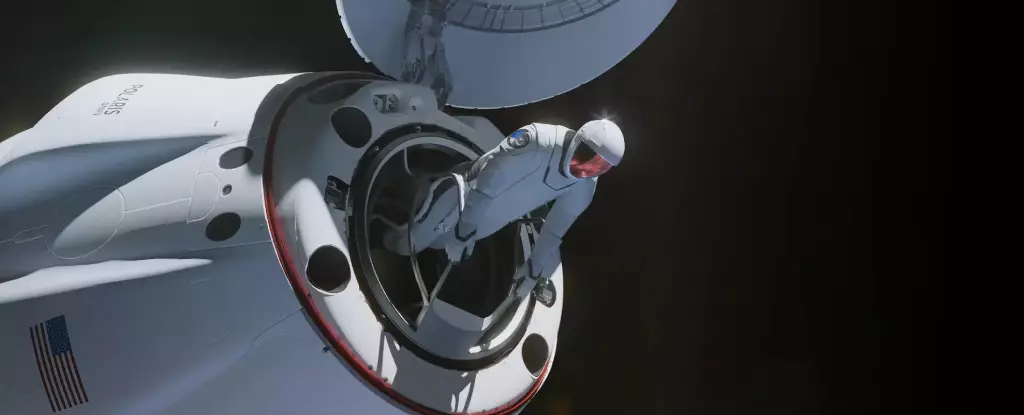SpaceX is set to embark on an unprecedented journey by launching an all-civilian crew on a daring orbital expedition known as the Polaris Dawn mission. Led by billionaire entrepreneur Jared Isaacman, this mission is scheduled to take off from NASA’s Kennedy Space Center in Florida at 3:38 am (0738 GMT). This marks a significant milestone in space exploration as it will include the first-ever spacewalk conducted by private citizens. The crew, consisting of four members, will don sleek, newly developed SpaceX extravehicular activity (EVA) suits for this groundbreaking spacewalk.
The crew of the Polaris Dawn mission, comprising Mission Commander Isaacman, Mission Pilot Scott Poteet, Mission Specialist Sarah Gillis, and Mission Specialist and Medical Officer Anna Menon, underwent rigorous training for over two years in preparation for this historic mission. They dedicated hundreds of hours to simulations, as well as engaging in activities such as skydiving, centrifuge training, scuba diving, and even summiting an Ecuadoran volcano. This intensive preparation underscores the importance of ensuring the crew’s safety and readiness for the challenges that lie ahead during their orbital expedition.
The Polaris Dawn mission is the first of three missions under the Polaris program, which is a collaboration between Isaacman’s tech company Shift4 Payments and SpaceX. The mission aims to develop and test new technology and operations in alignment with SpaceX’s ambitious vision of enabling humankind to explore the cosmos. The crew will traverse an altitude of 870 miles (1,400 kilometers), surpassing the heights reached by crewed missions in over half a century since the Apollo era. This mission signifies a significant leap in pushing the boundaries of space travel and advancing humanity’s presence beyond Earth.
During the Polaris Dawn mission, the crew will venture into the Van Allen radiation belt, a region bustling with high-energy charged particles that can pose health risks to humans over prolonged periods. This expedition will provide valuable insights into the effects of space radiation on the human body and further our understanding of the challenges associated with long-duration spaceflights. Additionally, the crew will conduct nearly 40 experiments aimed at enhancing our comprehension of human health in space, including innovative tests with contact lenses embedded with microelectronics to monitor changes in eye pressure and shape continually.
Pioneering Technology and Communication
As part of the mission objectives, the crew will test laser-based satellite communication between the spacecraft and Starlink, SpaceX’s extensive constellation of internet satellites. This initiative seeks to enhance space communication speeds and pave the way for more efficient data transmission between spacecraft and Earth. The crew’s engagement in pioneering technology and communication experiments underscores SpaceX’s commitment to innovation and advancing the capabilities of space travel for future missions.
The Polaris Dawn mission is slated to conclude with a splashdown off the coast of Florida, where a SpaceX recovery ship will be on standby to retrieve the crew. The success of this mission will set the stage for future endeavors, including the second Polaris mission utilizing a Dragon capsule and the third mission featuring the maiden crewed flight of Starship. These upcoming missions hold promises of further pushing the boundaries of space exploration and realizing Elon Musk’s vision of establishing human settlements on Mars. The Polaris Dawn mission represents a bold leap forward in space exploration, ushering in a new era of possibilities for humanity’s journey among the stars.


Leave a Reply